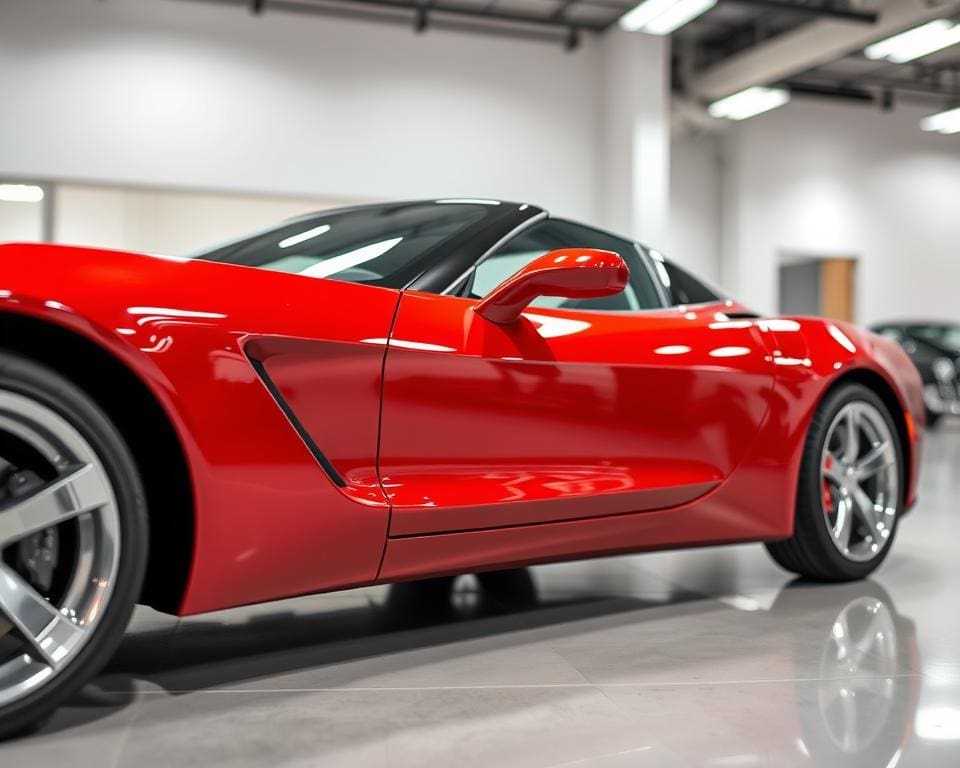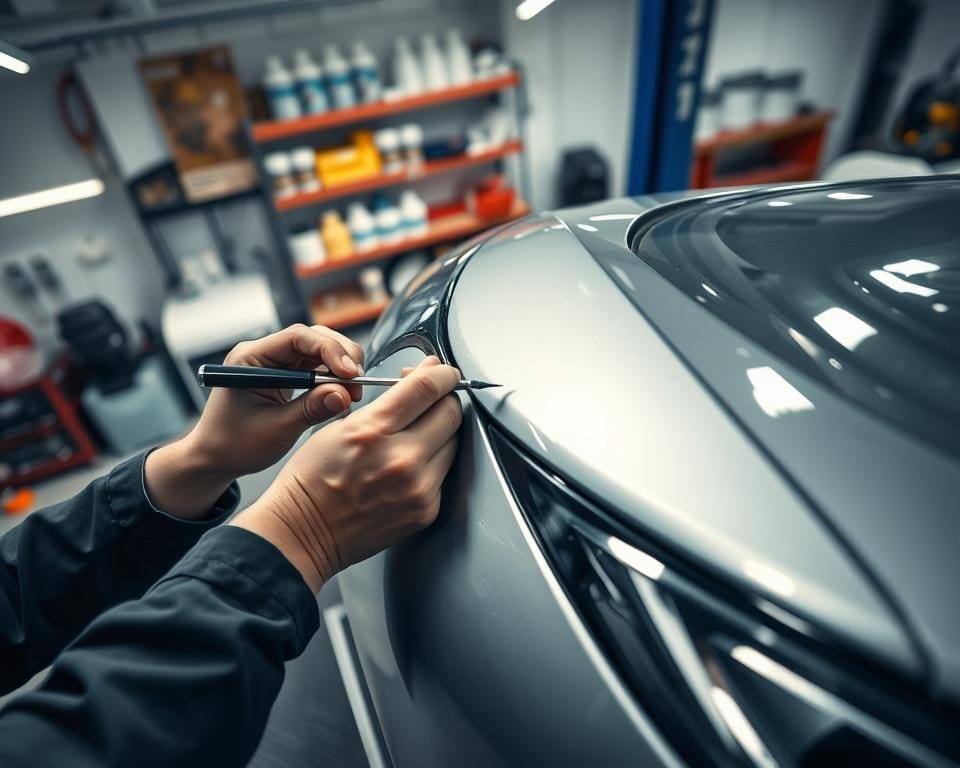Is color matching in car paint always invisible?

Color matching is a crucial aspect of car paint restoration, ensuring a seamless finish after car damage repair. Many people wonder if an invisible color match is actually possible. It’s important to understand how color matching works with car paint and what expectations one can have when repairing paint damage. This section highlights the factors that influence the visibility of a color match, so you can gain a better understanding of this topic.
What is color matching in car paint?
Color matching in car paint is a vital process that ensures the color of repaired paint matches a vehicle’s original paint. This is achieved through the use of specific color codes assigned by manufacturers to different car types. These color codes play a crucial role in paint repair because they allow you to find the right shade and finish that best complements the existing car paint.
Professionals in the automotive paint industry use various techniques to achieve the perfect color match. This may include the use of color palettes and modern technologies that help analyze the existing paint and compare it with available automotive paint. Accuracy in color matching is crucial because even slight variations in color are noticeable, especially in sunlight or under different lighting conditions.
When restoring car paint, the color-matching process is not just a matter of aesthetics, but also of craftsmanship. It requires experience and expertise to ensure a high-quality, durable end result. Color matching is therefore a constant challenge within the car paint industry, but with the right methods and materials, even the most demanding customers can be satisfied.
Is color matching in car paint always invisible?
Color matching is a crucial aspect of car paint restoration. This process goes beyond simply choosing a color. It requires accurate identification of the color code, which helps select the correct shade for damaged car paint. However, the question remains whether this color match is always invisible. Various circumstances can affect the visibility of the color match.
The role of color coding and identification
The color code plays a crucial role in achieving a perfect color match. This code, often found on the vehicle’s identification plate, helps specialists determine the exact color. When a car’s paint is damaged, they can use the color code to offer a suitable solution. Correct use of this color code can lead to an inconspicuous paint repair, but all factors must be carefully considered to minimize visibility.
Factors that influence the visibility of color matching
Several factors can influence the visibility of a color match. These include:
- Light incidence: The way light falls on the car can change color perception.
- Lacquer type: Different types of lacquer have unique properties that affect color reproduction.
- Paint Age: Paint that ages can fade or discolor, resulting in a difference from freshly applied paint.
By considering these factors, it’s easier to understand why not every color match is always perfectly invisible. Careful handling of car paint restoration is crucial to ensure optimal visibility.
Types of paint damage on cars
Car paint damage comes in various forms and can seriously impact a vehicle’s appearance and value. Recognizing the types of paint damage is crucial for timely action and preserving your car. Both minor and more extensive damage require appropriate auto body repair.
Minor paint damage and its impact
Minor paint damage, such as scratches or stone chips, may initially seem harmless, but this can quickly change. These small defects can worsen over time, especially due to weather conditions. It’s crucial to remove car paint scratches before they become deeper and cause more damage. Proper care can help maintain your car’s value.
How Paint Damage Appears on Different Cars
Paint damage appears in various ways and varies between different car models and colors. For some cars, it’s more visible due to the paint types and finishes used. Scratches are more noticeable on dark-colored cars than on lighter colors. Repairing such damage is essential to preserve the aesthetics and integrity of the paint.
Car paint restoration techniques
In car paint restoration, various techniques are available to repair paint damage. Spot repair is a popular method that can be very effective in specific situations. Polishing also plays a crucial role in improving the finish and concealing minor imperfections.
What is spot repair and when is it effective?
Spot repair is a technique aimed at repairing minor paint damage without the need to refinish the entire panel. This makes the process much faster and often more cost-effective. This method is ideal for small dents, scratches, or chips in the paint. The precise approach allows for excellent repair of damaged areas, resulting in a nearly invisible finish.
The benefits of car paint polishing
Car paint polishing offers a range of benefits that significantly enhance a vehicle’s appearance. Besides removing minor scratches and imperfections, polishing can also help restore the paint’s shine. Properly performed paint restoration reveals a fresh, clean finish, which can increase the car’s overall value. Maintaining the paint with polishing can help keep the car in top condition.
Professional car paint repair
Choosing a specialist in car paint repair offers numerous advantages. An expert can carefully analyze the damage and ensure perfect restoration. At amsterdamautos.nl, you’ll find highly qualified professionals specializing in car paint restoration. Their expertise in color matching guarantees optimal aesthetics for your car.
Why choose a specialist like amsterdamautos.nl?
Specialists offer a level of service that’s hard to match. Here are some reasons to choose professionals:
- Experience with different types of paint
- Advanced techniques and equipment
- Warranty on the work performed
- Faster repair times
How an expert achieves a perfect color match
Matching a car’s color is a precise job. Experts use various techniques to ensure the right shade:
- Scanning the paint to determine the exact color code.
- Use of professional mixing machines to create the color accurately.
- Performing test pieces to compare the color on the vehicle.
By following these methods, you can be sure that professional car paint repair will produce an invisible result that will perfectly match the rest of the car.
Restoring your car paint yourself: is it an option?
For many car owners, restoring their own car paint seems like an attractive option. The idea of DIY car paint can be both cost-effective and satisfying. However, it’s crucial to carefully consider the pros and cons before embarking on DIY car paint restoration.
One of the main advantages of restoring your car’s paint yourself is the savings on labor costs. Supplies like paint, sandpaper, and a paint sprayer are often less expensive than professional repairs. However, performing car paint restoration requires the right skills. An inexperienced person can quickly result in a color deviation that negatively impacts the car’s appearance.
Furthermore, there are some risks associated with DIY car paint. The chance of a poor color match is real, especially if you don’t have the car’s exact color code. This can not only be aesthetically unpleasing but can also affect the car’s value. For those inexperienced with paint restoration, the quality of the result can vary.
When considering DIY car paint restoration, it’s important to be well-informed about the processes and techniques. Because every car is unique, the complexity of paint restoration varies depending on the damage. Therefore, it can be helpful to purchase accessories and tools instead of working alone. This way, you can ensure the final result meets your expectations.
The cost of car paint repair
When restoring car paint, several factors influence the cost. The type of paint damage, the materials used, and the techniques used all play a significant role in the final price. It’s essential to have a good overview of these factors before deciding to have car paint repaired.
What influences the price of car paint repair?
Several factors influence the cost of car paint repair. The most important are:
- Type of damage: Small scratches are often cheaper to repair than deep dents or damage to large surfaces.
- Selected materials: Quality of the paint and any additional products may increase the price.
- Required technique: Advanced techniques such as spot repair require more expertise, which affects the cost.
Price comparisons between DIY and professional services
When comparing the price of DIY versus professional services, there are several important considerations. A DIY repair project may seem attractive due to the lower initial costs. However, the DIY price often doesn’t include the materials and time investment. Professional services, on the other hand, offer expertise and guaranteed quality, which also entails a higher price.
When making a decision, it’s important to consider not only the cost but also the quality of the repair. This can be essential for maintaining the car’s value.
Tips for maintaining perfect car paint
Maintaining perfect car paint starts with regular maintenance. A good rule of thumb is to wash your car at least once a month, depending on driving conditions. This removes dirt and other contaminants that can damage the paint. For optimal protection, applying a high-quality wax after washing can help maintain a glossy finish and protect the paint from UV rays.
In addition, it’s important to immediately remove harmful substances, such as bird droppings or tree sap. These can damage the paint if left on the surface for too long. Addressing any damage or scratches immediately is crucial; this prevents them from developing into larger, more expensive problems. Regularly checking your car’s paint and touching up minor damage is one of the best tips for car paint maintenance.
Finally, scheduling professional inspections and maintenance can prevent unexpected problems and extend the life of your paint. Experts can spot minor imperfections more quickly and provide the right treatments, preserving that perfect car paint. With these strategies, car owners can ensure their vehicle stays in top condition and maintains its aesthetic value.
FAQ
What is color matching in car paint?
Color matching in car paint is the process of matching the color of the repaired paint to the car’s existing paint. Manufacturers use specific color codes for different car types, helping professionals find the right color for an effective car paint repair.
Is color matching in car paint always invisible?
While color codes play an important role in achieving a color match, several factors such as light, paint type, and paint age can affect the visibility of the color match. Therefore, it’s not always possible to guarantee an invisible match.
What types of paint damage can occur on cars?
There are several types of paint damage to cars, including minor damage like scratches and dents. These types of damage can affect a vehicle’s appearance and even reduce its value. The appearance of paint damage can vary between different car models and colors.
What is the advantage of spot repair for car paint?
Spot repair is an effective technique for repairing minor paint damage. It offers advantages such as speed and cost-effectiveness, making it perfect for minor damage without the need for a full paint repair.
Why is it better to use a specialist like amsterdamautos.nl for car paint repair?
A specialist like amsterdamautos.nl has the expertise and experience to achieve a perfect color match. They use advanced techniques and have in-depth knowledge of the correct materials and methods for car paint restoration.
Can I repair my car paint myself?
It’s possible to repair car paint yourself, but this can carry risks, such as a poor color match. The required skill level and the cost of supplies can also be decisive factors in deciding to do it yourself.
What influences the cost of car paint repair?
The cost of car paint repair is influenced by several factors, including the type of damage, the required technique, and the materials used. This can range from minor paint damage to extensive repairs.
How can I maintain perfect car paint?
To maintain perfect car paint, it’s important to perform regular maintenance, such as washing, applying protective wax, and having professional inspections. This helps prevent damage and ensure the quality of the paint.

